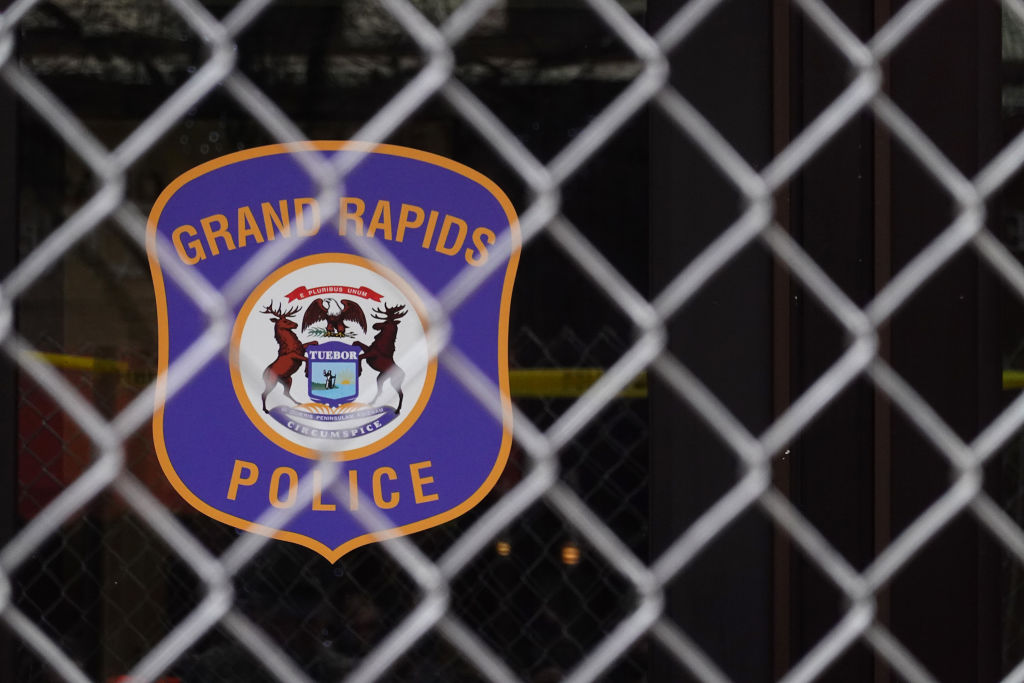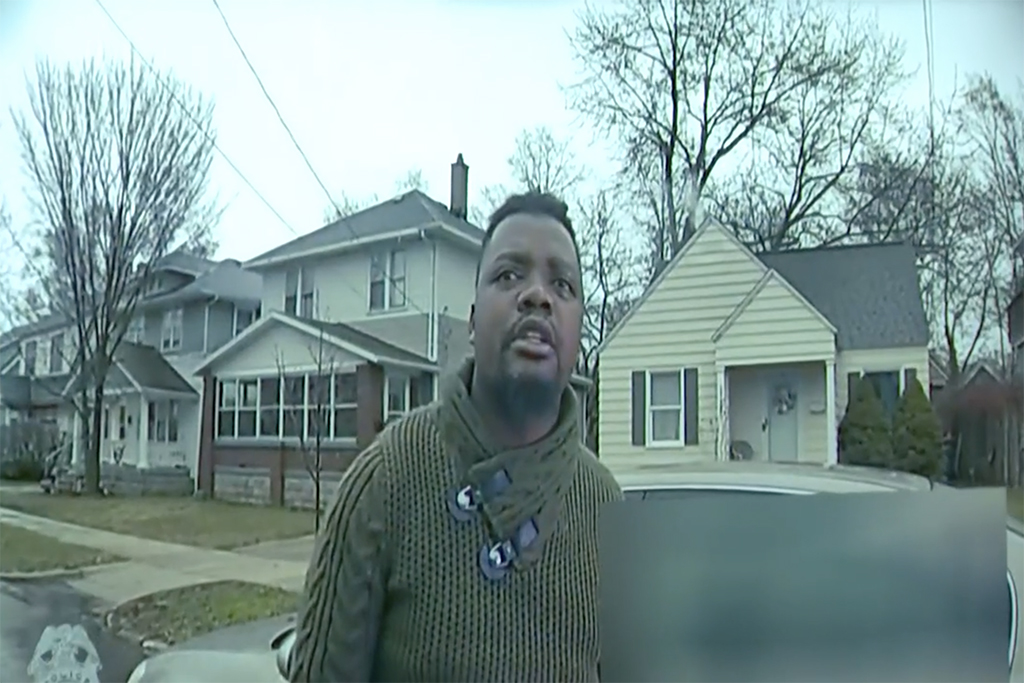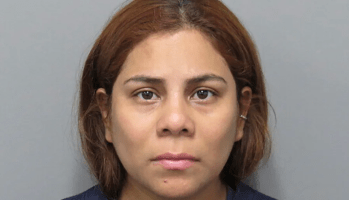
A fence surrounds the entrance to the Grand Rapids police station on April 14, 2022, following the killing of Patrick Lyoya in Grand Rapids, Michigan. | Source: Scott Olson / Getty
The recent shooting death of an unarmed Black man following a pretextual traffic stop has placed further scrutiny on the Michigan police department at the center of the case and its particular history of holding Black people at gunpoint.
Ongoing protests against the Grand Rapids Police Department were demanding justice after Patrick Lyoya, a 26-year-old Congolese refugee, was shot in the back of his head on April 4 following a brief struggle with an officer whose identity was being concealed by police and city officials.
Video footage released Wednesday strongly suggests the officer used excessive force and never tried to de-escalate a situation in which he was the aggressor.

Patrick Lyoya is shown on bodycam footage during the fateful traffic stop. | Source: City of Grand Rapids
The violent episode drew attention to the Grand Rapids Police Department’s very real history of racial profiling and eagerly brandishing guns while disproportionately directing unwarranted brutality toward Black people in Michigan’s second-most populous city.
The nation was previously reminded of the city’s police violence when a 14-year-old Black girl died from COVID-19 complications in 2020. Honestie Hodges’ life ended three years after she was the victim of state-sanctioned violence in Grand Rapids, where, as an 11-year-old, she was handcuffed at gunpoint while cops searched for a suspect in a stabbing. Video footage from the encounter showed Honestie sobbing and pleading while her grandmother yells for officers to acknowledge that she’s a child.
After several minutes, police removed the handcuffs once they realized they were wrong. Incredulously, the department later found that officers did not violate policy. In 2018, the Grand Rapids Police Department developed the “Honestie Policy,” a youth-interaction initiative that calls for fewer restrictions against children.
The same year Honestie was victimized by cops, the Grand Rapids Police Department allegedly racially profiled five unarmed Black teens by stopping and searching them at gunpoint. One of the teens was shown crying, according to video footage from the scene. Another teen comforted his crying friend by assuring him they would not die. At least two were handcuffed before all were released without any criminal charges.
The local news outlet MLive compiled a lengthy list of other instances of the Grand Rapids Police Department “pulling guns on minority residents,” including in 2018 when three Black boys — 11-year-old twins and a 17-year-old — were held at gunpoint while walking down the street. They were all handcuffed because police said they were suspected of having a gun. They were eventually released from custody with no charges.
Two months later that same year, Grand Rapids officers pulled a gun on a 12-year-old Black girl and frisked a 10-year-old Black boy following a shooting in which neither of them was involved.
Fast-forward to last year and officers with the Grand Rapids Police Department mistook a Black man in a McDonald’s parking lot for a burglar and held him at gunpoint despite workers at the fast-food restaurant telling cops their suspect had just paid for a meal. Not to be deterred, the man was still charged with failing to obey the police and malicious destruction of police property.
That same month, Grand Rapids cops violently arrested a Black male motorist in a driveway where he was waiting for his wife to get inside the car so they could drive to a wake for his mother-in-law. In that instance, the cops also pulled out their guns and aimed them at the innocent man who officers said they confused for a different Black man driving a similar vehicle. Not only was the man still charged with resisting and obstructing but also he and his wife were forced to miss the wake.
Lyoya’s police killing this month came five years after data showed Black drivers were twice as likely to be pulled over by cops compared to motorists from any other racial background. Notably, just 18% of Grand Rapids’ population is comprised of Black people, according to U.S. Census data.
Meanwhile, Grand Rapids Police Chief said this week he wouldn’t name the officer who killed Lyoya unless there were criminal charges. Kent County Prosecuting Attorney Christopher Becker previously told CNN his office’s investigation was ongoing. He said the public should temper expectations for a swift decision.
SEE ALSO:
Black Men And Boys Killed By Police
Grand Rapids Police's Gun-Happy Racial Profiling History was originally published on newsone.com
















